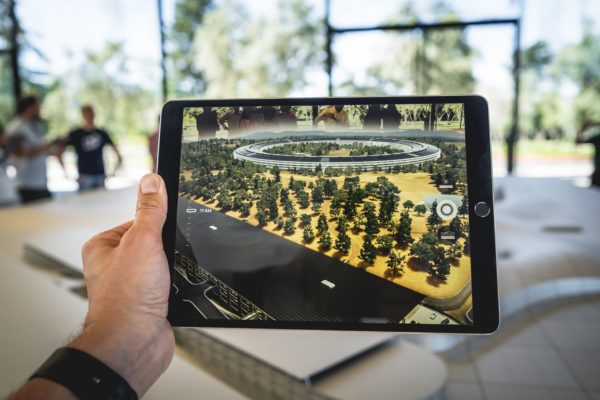Deakin scientist Dr Jane Dai and her team have developed a game-changing technique for creating liquid plasma.
Like most great ideas, the concept seems so simple you wonder why it wasn’t thought of before. Yet it was a lifelong devotion to plasma physics and chemistry – and a strong dose of creativity – that led Deakin’s Dr Jane Dai to create a new way of producing plasma inside a liquid.
The world-first has the potential to transform future practices in agriculture, food processing, water treatment, biomedicine, nanoscience and other fields.
It is based on a concept as simple as blowing bubbles into a drink through a straw.
The substance of the sun and stars, plasma is known as the fourth state of matter. It is an ionised gas, of positive and negative ions, electrons, excited atoms and molecules, and UV light – created through the conversion of a gas (one state of matter), to another, through the application of energy.
“To generate plasma from a gas is relatively easy in a lab, or in industry, and in nature, but to generate plasma inside liquid has been much more difficult,” explained Dr Dai, leader of Deakin’s Plasma Research Laboratory in the Institute for Frontier Materials.
The difficulty, until now, has been due to the fact that atoms or molecules in a liquid are denser than gas (the source of all plasma). This means that much more energy is required to generate plasma in liquid.
Previous methods for making liquid plasma involved either a high energy arc discharge, or the plasma was made next to the liquid using a source gas (usually air, argon or helium), a few millimetres above the liquid surface. The plasma species diffuse down into the liquid.
The new method is much more efficient and less expensive.
Dr Dai’s technique sees the gas flowing through fine metal needles to produce bubbles directly in the liquid. The plasma is formed inside the bubbles when a high-voltage pulse is applied for a nanosecond by a high voltage pulse generator.
[testimonial_text]Being generated in bubbles within the liquid means that the plasma species have nowhere else to go. They have to react with the liquid and go straight into the liquid.[/testimonial_text]
[testimonial_picture name=”Dr Jane Dai” details=”Senior Research Fellow – Institute for Frontier Materials”]
 [/testimonial_picture]
[/testimonial_picture]“This process will allow the commercial sector to make liquid plasma in large quantities at an affordable cost.”
Dr Dai and her team have now achieved the highest production and selectivity of plasma reactive species in liquid in the world.
The discovery has caused great interest among plasma scientists across the globe and was recently featured on the front cover of the journal “Plasma Processes and Polymers.”
“The idea was in my head for a long time because I knew the potential of liquid plasma,” said Dr Dai.
“During academic study leave in 2013, I visited plasma labs in the USA and Europe, including UC Berkeley (USA) and Queens University Belfast (Northern Ireland), where I discussed current technology and challenges, and encouraged a global approach and collaborations.
“When I returned to Deakin, I focused on addressing three key challenges for the existing technology: selectivity, efficient production of the required reactive species, and reduced energy consumption.
“I proposed to use a needle to insert the gas of choice (for selectivity) while achieving a strong electric field. Using different gases gives different gas phase reactive species, enabling selective production of the required species.
When plasma is generated above a liquid, it results in a mix of oxygen and nitrogen active species. When generated within liquid, specific active species can be selected. For instance, argon gas can be used to achieve hydrogen peroxide, while air plasma will generate nitrate for use as fertiliser – all without the use of chemicals.
“Furthermore, through the bubbles, the interface reactions between the gas-plasma and liquid are increased, enabling higher production of selected species.
“The results were repeatable and exactly as I had predicted. We shared the findings last year at the world’s biggest plasma conference in Belgium – where plasma physicists and chemists were very excited by the news.
“Now we have published and shared our results with everyone.”
She emphasised that the outcome was a local and global team effort – and she has been actively working to bring global experts together throughout her career. For instance, Prof Yakov Krasic, from the Israel Institute of Technology, recently visited Deakin as a Thinker in Residence.
During his stay he built a high power pulse generator and worked with the team to build a multi-needle reactor as an industrial prototype.
Scientists are only beginning to explore the potential applications of plasma in liquid form. In food and agriculture, it can be safely used to pasteurise milk, treat waste water and produce natural fertiliser (nitrate) within water, or even to improve the beer brewing process through seed treatment.
In nanofabrication, it can replace toxic chemicals in the production of nanoparticles and nanotubes, for use in solar cells or batteries, and it can produce ultra-strong “nano-diamonds” for use in biomedicine and electronics.
In biomedicine, it is proving effective in wound healing, treating cancer and even filtering blood, because of its ability to kill bacteria.
The next step for Dr Dai and her team is to further scale-up production and fine tune parameters. She hopes to be discussing commercial opportunities with industry within 12 months.



